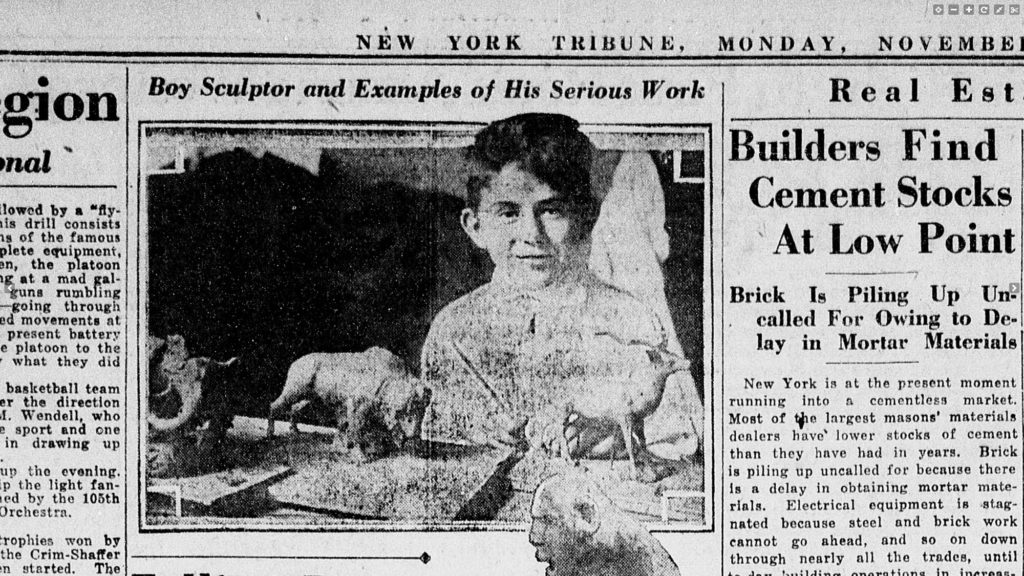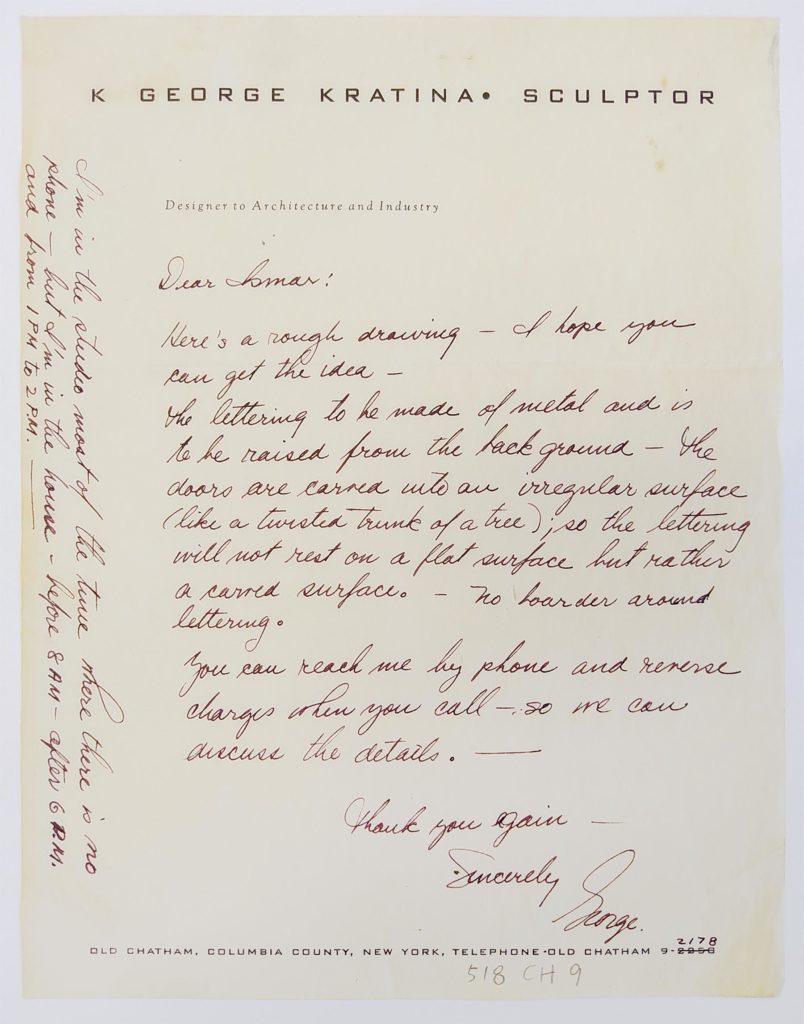George Kratina, 1910–1980, designer, sculptor and teacher.

In 1922, newspapers across the country enthusiastically dubbed boy-sculptor George Kratina from Brooklyn a “budding genius.” Kratina’s father, a successful sculptor, who had studied with Rodin in Paris, and mother, a landscape painter, encouraged and supported their son’s aspirations. Geroge Kratina worked his way through college doing sculpture, getting his bachelor’s and master’s degrees from New York State College of Forestry at Syracuse University. “I took up forestry, not because I was going to become a forester, but because it was a good education and I felt I needed a general education.”1Myers, Arthur, A Sort of Davy Crockett: With Rubber and Plastic, an Old Chatham Artist Carves a Tribute to Chattanooga’s Pioneer Past, The Berkshire Eagle, Pittsfield, MA, December 15, 1962, p. 14. He then studied design and sculpture at Yale. He competed in “sculpturing” in the 1932 and 1936 Olympics, in Los Angeles and Berlin respectively, when fine arts were still a part of the games. He taught at Cooper Union and Rensselaer Polytechnic Institute. Architect John Heyduk recalled Kratina as a “passionate teacher who never saw anything bad in your work, he always pulled out whatever was good in it.”2ARMADILLO: John Heyduck. A taped interview conducted by Pere Eisenman in the fall of 1977.
Kratina and his wife Annie had a home in Old Chatham, New York, with a studio where he did his often monumental work. In an undated letter to Ismar David, he described a potential collaboration.

Dear Ismar:
Here’s a rough drawing — I hope you can get the idea—
The lettering to be made of metal and is to be raised from the background — the doors are carved into an irregular surface (like a twisted trunk of a tree); so the lettering will not rest on a flat surface but rather a carved surface. — no boarder [sic] around lettering.You can reach me by phone and reverse charges when you call – so we can discuss the details. –
Thank you again —
Sincerely
George
I’m in the studio most of the time where there is no phone – but I’m in the house –before 8 AM – after 6 P.M. and from 1 PM to 2 P.M. —

























